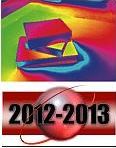Historical trends on e-book sales from the last few years convinced a number of analysts to postulate and project that by the end of 2012 e-books will comprise 50% of total book sales. As the financial results from companies such as Amazon, Pearson, Simon & Schuster and Barnes & Noble got released, one indication became clear – e-books will take at least another 2 years to reach such level in sales. Furthermore, there are indications that sales of e-readers may have peaked and tablets are the new norm of electronic reading. In fact, preliminary statistics have shown that tablets are now outselling e-readers by a ratio of 3-to-1.
While e-book purchases continue to expand, the growth has declined considerably with the domination of the tablet as the device of choice. Reading is not as engaging an activity on tablets, when grouped competitively, side by side with other apps, the internet and videogames. While the future of the physical book is still highly debatable, the reality is that books will steadily fulfill fewer functions in the future. The enticing dynamics of cost cutting, convenience, and technological innovation will continue to apply pressure and will continue to change the book marketplace.
While insulated from drastic changes, the rare book market is quite vulnerable to the trends affecting the physical book, primarily due to the impact from academia. Academic libraries have historically served two primary functions, one being promoting pedagogy and the second facilitating research. The internet and, more recently, e-books have provided more cost-effective alternatives than new book acquisitions by such institutions. Libraries have always had difficulty keeping up with the rising price of collectible books, so having research material available to scholars digitally is, with some exception, a very desirable alternative. Physical books however, unlike e-books have additional copy-specific features such as bookplates, inscriptions, associations, handwritten notes, unique bindings and other one-time owner or author markings. Such texts bring life in the physical world, and are in many cases the unique attributes that contribute not only to scarcity but also to historical evidence for in-depth research examination.
Printed books cost money, however, and they are subjected to the bad ills of the elements of soil, air, fire and water. These factors ultimately impact supply with reductions that counteract somewhat the effect of institutional cutbacks. Overall library purchasing reductions have also been affected by city and state budget cuts across the United States and the European economies with library closings. The library system may in fact be in even more trouble than currently. It should no longer be taken for granted that a rare book in an institutional collection is permanently removed from the market.
The rare book market, while still far behind the art market in transactional values, it is slowly drawing closer as indicated by sales of some comparable high-spots. Furthermore, book artists and specialists in the older technologies of type design, typefounding, papermaking, leather binding, book design, and printing will go on making books that are beautiful, just as painters and artisans will always make art.
In summary, while in the future the physical book should be able to carry out some of its well-known functions despite the advancements of convenient, cheaper alternatives, the rare book marketplace should still continue to thrive. Increasing scarcity for the most collectible books should continue to drive rare book pricing even higher, especially as global demand for the collectible grows. Institutional buying should continue to decline while private collectors keep their books for investment purposes and do not make them available to scholars. Human book readers are likely to continue to have access to the physical book for the pure pleasure associated with reading, smelling and touching the object of their desire.


{ 0 comments… add one now }